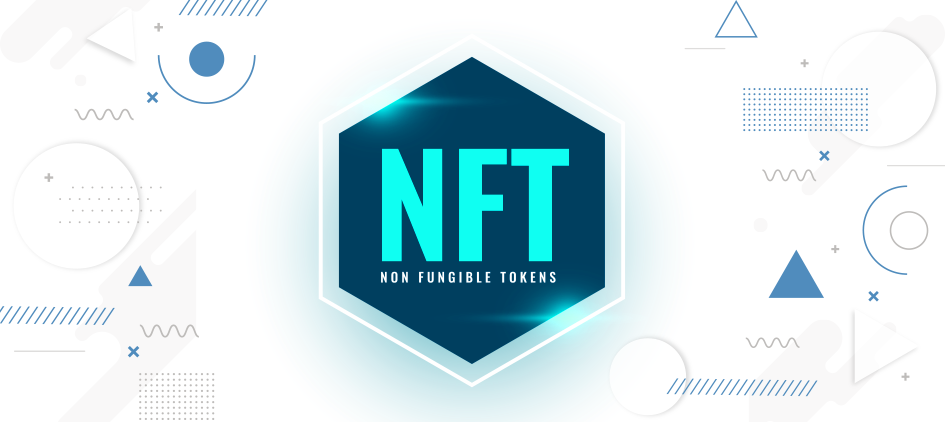
NFTs (Non-Fungible Tokens) and Banking: Opportunities for Innovation
The perception of art, music, and collectibles is transformed by non-fungible tokens (NFTs), distinctive digital assets that enable creators to monetize their work in novel and exciting ways. Unsurprisingly, they are eclipsing the arts and entertainment sector. How can owners leverage their digital assets without selling as NFT values rise? NFT Banking offers an innovative solution, allowing them to use NFTs as collateral for financing. Without a doubt, the advantages of NFT Banking are substantial. In this article let’s dive into the realm of NFT banking, where traditional finance and innovation intersect, and digital assets meet opportunity.

What is the definition of NFT banking?
NFTs are distinctive digital assets stored on a blockchain and employed to denote ownership of a specific object, such as a collectible or a piece of artwork. We can now investigate the field of NFT finance. In layperson’s terms, NFT Banking utilizes NFTs as collateral for loans and financial products. It is a method for NFT owners to leverage their assets without the need to transfer them. They can access funds without liquidating their most valuable possessions using NFTs as collateral. It is especially beneficial for artists and aficionados who may possess valuable NFTs but are hesitant to sell them. NFT banking is a game-changing innovation that concurrently broadens the financial industry’s customer base and grants NFT owners access to liquidity and capital.
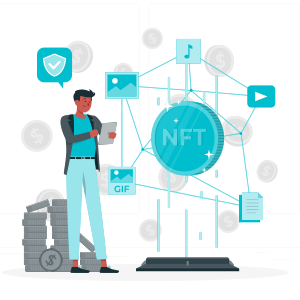 What is the mechanism of NFT banking?
What is the mechanism of NFT banking?
Although NFT banking is a relatively novel concept, it functions similarly to traditional banking. NFT owners can utilize their NFTs as collateral for loans or other financial products, as opposed to traditional assets such as real estate or securities. The borrower must initially pledge their NFT as collateral to secure an NFT-backed loan. The lender then assesses the value of the NFT and accordingly provides a loan amount. After approval, the borrower must redeem the loan with interest within a specified timeframe. The borrower receives the loan amount. The loan proceeds are available for the borrower to use for any purpose, similar to a conventional loan. The NFT collateral may be forfeited if the loan is not repaid promptly.
NFT-backed savings accounts are an additional application of NFT finance. These savings accounts are tied to the value of NFTs.
Account holders deposit their NFTs, and the bank assesses their value to calculate interest. Additionally, NFT banking provides NFT insurance, which enables NFT owners to safeguard their NFTs from theft, loss, or fraud. It offers a safety net for NFT proprietors who may have invested money in digital assets. In general, NFT banking provides a novel method for NFT proprietors to access financing and leverage their assets without selling them. Although blockchain technology was only introduced approximately ten years ago and is still in the early stages of adoption, decentralization is acquiring new significance due to the proliferation of digital currencies and NFTs.
The banking and payments industries are expected to transform significantly due to this technology’s widespread acceptance and implementation. In particular, technology is revolutionizing the operations of numerous financial institutions that are in the process of modernizing. It is achieved by significantly reducing operational expenses and the time typically required for specific processes. Despite the many benefits of blockchain technology, its adoption has been postponed. This is likely because institutions have already established technical infrastructure and the potential for decentralization creates uncertainty. This concept is not a continuation of previous technologies; rather, it is a novel operating model that necessitates the implementation of new technology. One of the initial promises of blockchain technology was its ability to serve as the foundation for global recording systems. The seamless, secure, and real-time transmission of financial data across borders is a significant advantage of global banking and payments.
Factors to evaluate in the banking industry
As many financial institutions (FIs) evaluate non-fungible tokens (NFTs), we investigate their potential impact on the financial services sector. In the wealth management industry, consumers own high-end physical collectibles that are considered an indispensable element of an investor’s portfolio. There is a growing trend among banks to consider digital collectibles, such as NFTs, as promotional tools, technological advancements, and assets. The metaverse, where valuable assets may be purchased and sold as NFTs, is the primary context in which banks consider them.
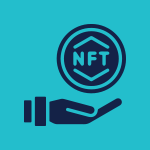 1. Asset-backed NFTs
1. Asset-backed NFTs
Asset-backed NFTs in fintech have already substantially impacted the blockchain sector. These digital assets are anticipated to establish a new financial infrastructure with immense resources and the potential to unite industries by connecting with other blockchain applications. Several digital transformation companies have already adopted this technology to enhance their visibility in the metaverse. It is anticipated that NFTs will continue to pique interest shortly. The market for these tokens has already garnered significant investment, and it appears to continue to grow significantly in the months ahead. The emergence of NFTs has the potential to impact the fintech industry significantly. The transformation of a greater number of digital assets into NFTs may result in the emergence of entirely new asset classes, which will alter the decision-making process of financiers. NFTs are anticipated to have a greater impact on the financial industry and fintech than they currently do, even though security and environmental concerns persist. Some issues remain to be resolved, and processes still require optimization. NFT tokens can be employed to represent both digital and tangible products that are transferred or purchased in an online marketplace.
Furthermore, tokenizing the financial information associated with an asset will assist in overcoming the obstacles that conventional cross-border transactions frequently encounter. In contrast to conventional banking systems, NFT banking processes transactions at a rapid pace without the necessity of human labour. The transfer of data via NFT is both secure and rapid. Blockchain technology’s decentralized nature allows individuals worldwide to access the same information, regardless of location. Due to the incorporation of smart contracts, the assets associated with the tokens and the users’ money will remain protected from external threats.
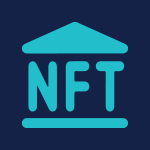
2. The Impact of NFTs and DLT on Banks
Although the technology has existed since 1991, blockchain was only introduced approximately ten years ago. Cryptocurrencies and NFTs have sparked renewed interest in distributed ledger technology (DLT), although its adoption and implementation remain in their early stages.The banking and payments sectors anticipate transforming business practices as this technology becomes more extensively adopted and utilized. Technology is revolutionizing the operations of numerous modern institutions by significantly reducing operating expenses and the time required for specific activities. DLT is a novel business model that requires implementing new technology rather than extending existing practices. The intriguing aspect of a distributed ledger is that all parties simultaneously possess it. The provision of a global data infrastructure through DLT grants all users access to the same common information.
One of the earliest promises of technology was the potential for blockchain to serve as the foundation of global recordkeeping systems. The seamless, secure, and real-time transmission of financial data across borders can significantly enhance global banking and payments. The security of real-time information sharing across financial institutions may be enhanced, and duplication of effort may be saved by blockchain technology, which stores client data on decentralized blocks. It is from a data perspective. The inherent security of blockchain technology may alleviate some of the ongoing administrative and regulatory obligations. It can facilitate the provision of payment processing services that are both rapid and potentially real-time. Banks implementing DLT face challenges beyond technology; success requires innovative concepts and a distinct software development, deployment, and management approach.

3. Brand and technology recognition
While incorporating brand recognition into their strategy, banks will continue to aggressively engaging diverse consumer groups. NFTs can facilitate the development and enhancement of established brand loyalty programs. NFT loyalty-based programs are being promoted more frequently by communities and companies offering discounts, exclusive offers, and new product releases sponsored by NFT holders. It fosters a sense of exclusivity among various demographic groups.
To apply this logic to banking, a bank account holder with rewards current account that provides benefits and features such as travel insurance and culinary discounts may utilize their NFT to access these benefits and features. The bank’s profile would be enhanced and directed towards the next-generation banking of Web 3.
 4. Data security and safety in the metaverse and beyond
4. Data security and safety in the metaverse and beyond
The usp of blockchain technology is that the data is encoded into an NFT on-chain is secure from modification, copying, or any other form of access by individuals without cryptographic keys. An NFT is extremely secure, as its history and destination would be visible to all, even if a hacker were to steal it successfully. It provides financial organizations that are responsible for the management of sensitive data with a variety of options. For instance, document fraud remains a substantial issue despite the intensive regulation of trade finance. Nevertheless, NFTs have the potential to establish connections to the off-chain locations where this data is stored. It leads to establishing an irrevocable record of the location of substantial assets. The significance of NFTs will increase as the metaverse’s potential is realized. As banks increase their investments in the metaverse, blockchain technology can provide a more stable platform for client interactions. The security of all data will be maintained through decentralized ledgers.
 5. DeFi and Fintech Innovation
5. DeFi and Fintech Innovation
Besides enhancing security, blockchain technology offers many benefits to financial organizations. Some of these include reduced transaction friction and a higher degree of customization for financial products and services due to automation. As NFTs continue to expand, the adoption of decentralized finance (DeFi) will be significantly more transparent and direct for all actors and participants. The merger of NFTs and DeFi will drive fintech innovation, at least in the short term. The emergence of NFT-related funds are comparable to how blockchain funds have emerged in response to the increasing value of cryptocurrencies.
 6. More efficient collateralization
6. More efficient collateralization
NFTs are currently being used as loan collateral. Many NFT collectors utilize several platforms to connect with NFT owners interested in obtaining financing by using their NFTs as collateral. Borrowers may obtain funds without liquidating their digital assets, and lenders may impose higher interest rates than traditional loans. Numerous future digital collateralization opportunities exist, particularly as Web3 is being developed using blockchain technology. Virtually all contemporary objects, including financial transactions, have digital counterparts. Consequently, any item converted to digital format may serve as conceptual collateral.. Financial institutions with a well-defined NFT strategy will be well-positioned to capitalize on the increasing number of institutions that utilize NFTs as investment vehicles.
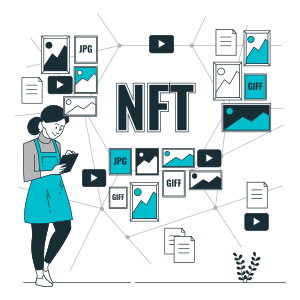 The Banking Industry’s Future with Asset-Backed NFTS
The Banking Industry’s Future with Asset-Backed NFTS
The variety of commercial applications that could be incorporated into banking services and products has been broadened by digital asset tokenization. Furthermore, they may be implemented to enhance financial transactions. Banks and other financial organizations have numerous opportunities to establish themselves as industry leaders by providing the most effective digital transformation solutions. The potential for frictionless banking, made possible by NFTs, is now accessible to non-traditional financial service providers. Unexpected players are invading the ecosystems that facilitate NFT payments. It is crucial to monitor their ability to establish a substantial community of followers and their ability to offer frictionless solutions on well-known platforms. These platforms appeal to buyers and vendors, and their clientele may be comparable to traditional banks.
Conclusion
Even though the concept of NFTs is still in its infancy, it has already demonstrated a high potential for substantial profits for its proprietors while simultaneously providing genuine value to buyers and sellers. NFTs have the potential to serve as a tool for a variety of duties or a component that facilitates the integration of other blockchain-based software applications.
How Can Datavision help?
We assist various financial institutions and global banks on their digital transformation journey. Our one-of-a-kind approach, which combines people, process, and technology, expedites the delivery of superior results to our clients and drives excellence. Several reputed companies leverage our proprietary suite of business excellence tools and services to unlock new growth levers and unparalleled ROI.
Datavision stands proudly as a prominent banking software solutions provider, recognized for our unwavering commitment to excellence in the industry. We have earned our esteemed reputation by consistently delivering cutting-edge core banking software, catering to the needs of both retail and corporate banking software sectors. At Datavision, our mission is clear: to provide our clients with the best banking software products, ensuring that they stay ahead in an ever-evolving financial landscape. We take pride in serving our prestigious clients and look forward to continuing our journey of innovation and excellence.
Our portfolio of banking software product and services include:
Core Banking Solutions: | FinNext Core | Banking: | FinTrade | EasyLoan | MicroFin |
Digital Banking Solutions: | IBanc | MobiBanc | MBranch | FinTab | FinSight |
Risk & Compliance: |FinTrust |
Want to know how our team of experts at Datavision provides customizable, scalable, and cost-effective banking software products and solutions to our esteemed clients? Visit us for more information.